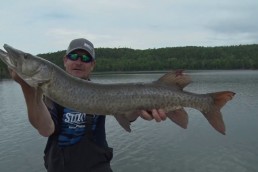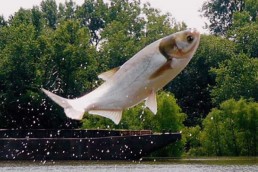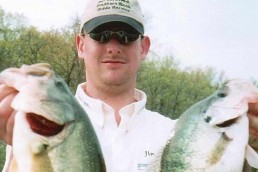Bowfishers Control Invasive Species
SHARE THIS POST
Conservation may not be the first thing that comes to mind when you see a boat cruising around carrying people outfitted with archery equipment. As each arrow is launched into the water, some may wonder what is going on. And like most outdoors pursuits, the answer is not singular. But bowfishers are having fun while removing rough fish from our waters.
First and foremost, bowfishers are out for a good time and love combining archery and fishing. Having an opportunity that combines two pastimes is so gratifying that sometimes the anglers can hardly believe it exists. But bowfishing is very real and is growing in popularity.
Aside from the obvious fun of the sport, bowfisihng accomplishes many things including the reduction of undesirable and invasive species. This method takes many non-gamefish, and can be an effective way to harvest some of these that can be otherwise difficult to catch.
Rough fish, or trash fish, have their place in some ecosystems; they do clean some of the bottom debris and a common carp here or there isn’t going to do too much damage. However, when the population of the common carp or even gar become significantly too high the sport fish population can and will suffer. Asian carp, for instance, will destroy nesting areas and will devour the eggs of gamefish.
Are you enjoying this post?
You can be among the first to get the latest info on where to go, what to use and how to use it!
The Asian carp (black, silver, grass and bighead) were brought to America by fish farmers to clean the algae in their tanks. They were also used to clean sewage treatment plants. Once they found their way into rivers and lakes by accidental escape and purposeful planting, these carp quickly became a problem. Now they’re decimating fisheries throughout the Midwest region and are threatening to devastate the Great Lakes.
“As large populations of Asian carp become established, cumulative effects of those species include risk to human safety, reductions of native plants that provide spawning and nursery areas for fishes, reduced food for native fishes and waterfowl, and reductions in dollars for regional economies that rely on fishing, boating, and waterfowl hunting,” according to an official at the U.S. Fish & Wildlife Service.
Bowfishermen are targeting these fish now and are taking them out of our rivers and lakes, and are acting as conservationists in duality. First of all, we pay money to purchase a license to legally pursue these undesirable inhabitants; the funds go directly toward conservation. The government is also spending money to study additional ways to eradicate these carp.
If you’re a longtime angler, then you already know that what you do on the water is good for conservation. Perhaps you have some friends who have never thought of bowfishing in such a light. Do yourself and your sport a service and spread the word. Tell them the story of how bowfishing benefits the waterways we all enjoy and that it is conservation.
MWO
SHARE THIS POST
Did you enjoy this post?
You can be among the first to get the latest info on where to go, what to use and how to use it!
Brandon Butler
As past executive director of the Conservation Federation of Missouri, Brandon Butler has made a name for himself by fighting to protect fish and wildlife, and critical habitats. His syndicated column, “Driftwood Outdoors,” appears in more than 30 newspapers, weekly, across Missouri and Indiana. Reach him via email at bbutler@driftwoodoutdoors.com.



